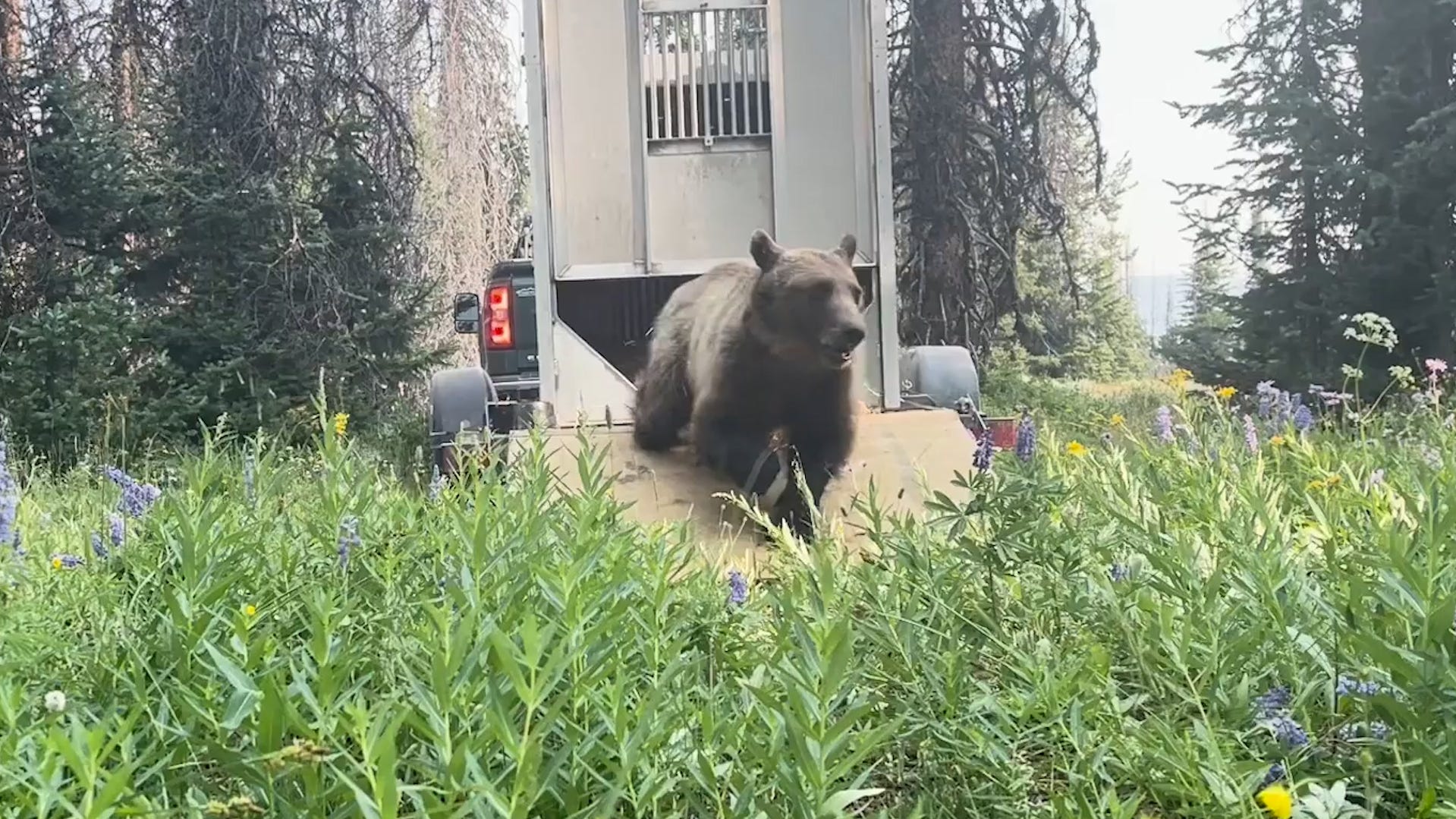New rule proposes changes to endangered grizzly bear protections. Here's what to know

- The proposal has sparked controversy, with some politicians supporting state management of grizzly populations while environmental groups express concern over potential increased mortality rates.
- The U.S. Fish and Wildlife Service maintains that the new rule will aid in the recovery and eventual delisting of grizzly bears from the Endangered Species Act.
- A 60-day public comment period is underway, with public meetings scheduled for late January and early February.
The federal government has proposed a rule that would create a new region of protection for grizzly bears, while allowing citizens to kill the bears under certain conditions.
The U.S. Fish and Wildlife Service proposed a comprehensive plan on Wednesday that would create a new geographic region throughout Washington, Montana, Idaho and Wyoming in which grizzly bears would be protected under the Endangered Species Act. Since 1975, grizzlies have been protected by the act in all of the lower 48 states, but the rule would remove protections to all areas outside of the new geographic region.
In areas without federal protections, grizzly bears would fall under the jurisdiction of state laws and management rules.
In the protection regions, citizens would be able to kill grizzly bears, only under certain conditions. In Idaho, it would be legal to kill a grizzly if it harms livestock or domesticated animals, In Montana, it would become legal to kill a grizzly if it harms livestock. Without the Endangered Species Act, Wyoming could establish a grizzly bear hunting season.
It's unclear how many grizzlies live in the unprotected areas outside the new proposed designated region. In general in the lower 48 states, the species is only found in Montana, Wyoming, Idaho and in rare cases, Washington.
The U.S. Fish and Wildlife Service said protections for grizzly bears outside of the Rockies is unnecessary, as they don't reside in these regions and are not expected to in the future.
"This reclassification will facilitate recovery of grizzly bears and provide a stronger foundation for eventual delisting (from the Endangered Species Act)," Martha Williams, U.S. Fish and Wildlife Service director, said in a statement.
Here's what politicians and environmental groups have to say about the proposed rule.
Politicians push back with desire for state management
In recent years, government officials in Montana, Idaho and Wyoming have petitioned the U.S. Fish and Wildlife Service, seeking to reclaim state management of their grizzly bear populations.
In 2023, the Idaho sued the U.S. Fish and Wildlife Service after the agency failed to recognize the state's petition to delist grizzly bears in the state from the Endangered Species Act.
According to the petition, the state sought grizzlies to be delisted because their numbers had reportedly rebounded from historic lows. This, the state argued, led to grizzlies occurring in "unsuitable" areas, like agricultural lands and communities, where "they pose rick to public safety." The petition stated that grizzly bear conflict management − killing problematic bears − is "best accomplished" under state management, not the Endangered Species Act.
In a statement made on Wednesday, Idaho Gov. Brad Little said the U.S. Fish and Wildlife Service is "rejecting the fact that grizzlies have reached and exceeded recovery criteria years ago."
"I’ve instructed the Idaho Department of Fish and Game and Office of Species Conservation to fully examine the proposed rule in an attempt to find the rationale behind the decision, which seemingly disregards the science and the collective efforts of stakeholders that have led to the successful recovery and conservation of grizzly bears," Little continued.
According to the Endangered Species Act, the U.S. Fish and Wildlife Service will consider delisting an animal if its habitat is not under threat of destruction; the species is not subject to over-utilization; disease or predation is not a factor; mechanisms are in place to protect it; and there are not other natural or manmade factors affecting it. There is no black-and-white criteria for when animals are eligible to be delisted from the Endangered Species Act.
Today, grizzly bears occupy only 4% of their former range, which included much of the Rocky Mountain Region, extended up into western and central Canada and northern Mexico, according to environmental nonprofit WildEarth Guardians. Once, between 50,000 and 100,000 grizzly roamed throughout this region, but today, fewer than 2,200 grizzly bears remain.
Environmental groups express disappointment in restricted protections
In response to the plan, the Endangered Species Coalition, Friends of the Bitterroot, Friends of the Clearwater, WildEarth Guardians and Wyoming Wildlife shared their disappointment in the rule.
"We are disappointed with the proposal to remove protections for the remaining states in the lower 48," the joint statement reads. "With the current threat of habitat loss and climate change, grizzlies have a ways to go until they are recovered. Importantly, the states of Montana, Idaho and Wyoming are grossly unprepared to manage grizzlies and have adopted anti-predator policies that would reverse the recovery of this iconic native species."
The environmental organizations also expressed concern with the plan's proposition to provide more flexibility to management agencies and individuals, which they believe may result in increased grizzly bear mortality.
When will the new plan be put into place?
As of Wednesday, the new comprehensive plan will be published in the Federal Register in "the coming days," according to the U.S. Fish and Wildlife Service. Once published, there will be a 60-day public comment period in which individuals may share their thoughts about the plan. In-person public comment meetings will also be held throughout late January and early February. For the full list of meeting dates and locations, visit fws.gov/grizzlyrulemaking.
Following the public comment period, further discussion about the rule and its implements will be discussed.
Greta Cross is a national trending reporter at Paste BN. Follow her on X and Instagram @gretalcross. Story idea? Email her at gcross@usatoday.com.